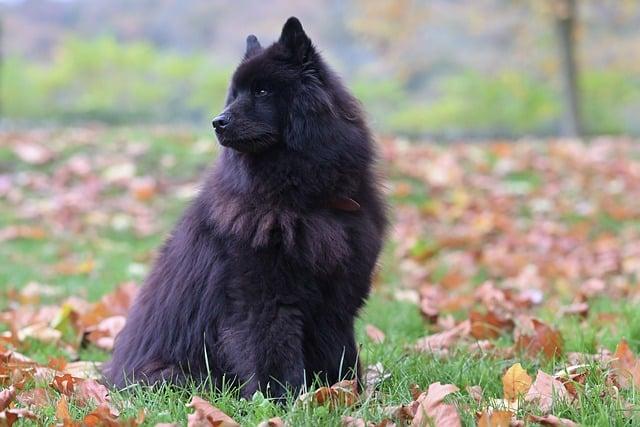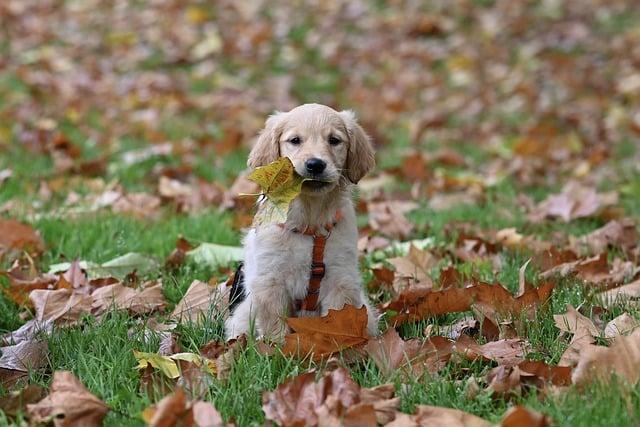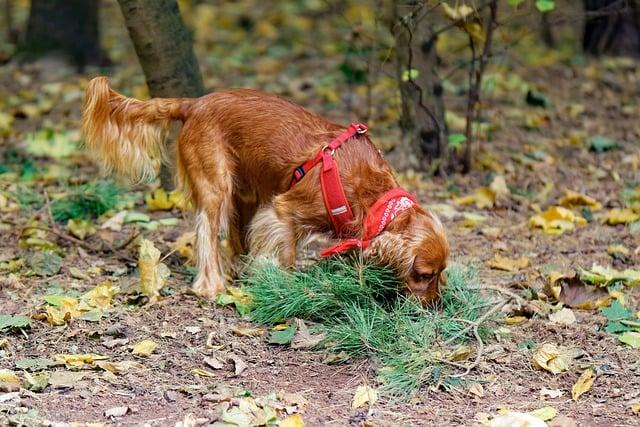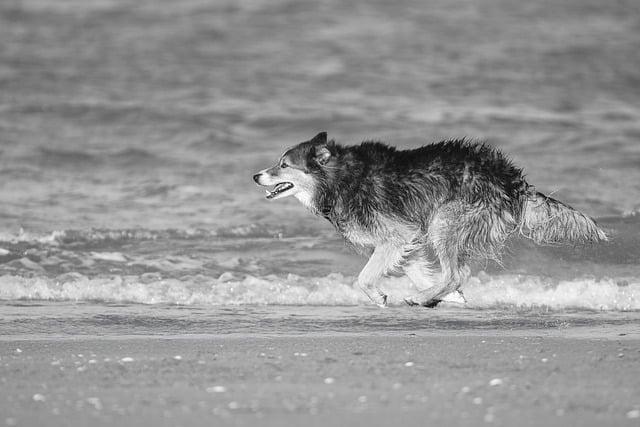Have you ever wondered why your dog greets you with enthusiastic licks? Picture this: after a long day, you walk through the door, and your furry friend rushes to you, tail wagging, showering you with affection. This behavior isn’t just a quirky habit; it’s rooted in instinct. Dogs lick to communicate love, seek attention, and even taste your unique scent. It’s their way of saying, “I missed you!” Understanding this can deepen your bond and enhance your relationship. So, the next time your dog licks you, embrace it as a heartfelt greeting from a loyal companion.
Contents
- Understanding the Instinctual Behavior Behind Dog Licking
- The Emotional Connection: How Licking Strengthens Your Bond
- Health Considerations: When Licking May Indicate Underlying Issues
- Practical Strategies to Manage Excessive Licking in Dogs
- Q&A
Understanding the Instinctual Behavior Behind Dog Licking
Dog licking is a behavior deeply rooted in instinct and serves multiple purposes that go beyond mere affection. When a dog licks, it often reflects their natural tendencies inherited from their ancestors. In the wild, dogs would lick their mothers to stimulate feeding and grooming, a behavior that fosters bonding and care. This instinctual action is not just a remnant of puppyhood; it continues into adulthood as a means of communication and connection.
Moreover, licking can be a way for dogs to explore their environment. Dogs experience the world primarily through their sense of taste and smell, and licking allows them to gather information about their surroundings, including the people they interact with. This behavior can be particularly pronounced when they meet new individuals or encounter unfamiliar scents. By licking, they are not only expressing curiosity but also attempting to understand their social context.
In addition to exploration, licking can serve as a self-soothing mechanism for dogs. Just as humans might engage in habits like nail-biting or hair-twirling when anxious, dogs may lick themselves or their owners to alleviate stress. This behavior can be especially noticeable in situations that provoke anxiety, such as thunderstorms or visits to the vet. By licking, they release endorphins, which can help calm their nerves and provide comfort in times of distress.
Lastly, it’s essential to recognize that licking can also be a sign of affection and bonding. Dogs often lick their owners as a way to show love and loyalty. This behavior is reinforced through positive interactions, where the owner responds with petting or praise. Over time, this creates a feedback loop that strengthens the emotional connection between the dog and its human. Understanding these various motivations behind licking can enhance our relationship with our furry companions, allowing us to respond appropriately to their needs and emotions.
The Emotional Connection: How Licking Strengthens Your Bond
When your dog licks you, it’s more than just a quirky behavior; it’s a profound expression of affection and trust. This instinctual action serves as a powerful bonding mechanism, reinforcing the emotional connection between you and your furry friend. Dogs are pack animals by nature, and licking is a way for them to communicate their feelings and establish social bonds within their group. By licking you, your dog is essentially saying, “You are part of my pack.”
Moreover, licking releases endorphins in dogs, creating a sense of comfort and pleasure. This physiological response not only makes them feel good but also enhances their emotional attachment to you. When your dog licks you, it’s a mutual exchange of affection that strengthens your relationship. The more you respond positively to this behavior, the more your dog will associate licking with love and security, deepening the bond you share.
In addition to expressing love, licking can also be a way for dogs to seek attention and reassurance. When they lick you, they may be looking for a reaction, whether it’s a gentle pat on the head or a warm smile. This interaction fosters a sense of belonging and reinforces their role in your life. By acknowledging their licks, you are not only validating their feelings but also encouraging a deeper emotional connection.
Lastly, licking can serve as a form of communication, allowing dogs to convey their needs and emotions. Whether they are feeling anxious, excited, or simply want to play, licking can be a way for them to express these feelings. By paying attention to the context in which your dog licks you, you can better understand their emotional state and respond accordingly. This responsiveness not only enhances your bond but also builds a foundation of trust and understanding that is essential for a harmonious relationship.
Health Considerations: When Licking May Indicate Underlying Issues
While licking is often a benign behavior in dogs, it can sometimes signal underlying health issues that warrant attention. If your dog’s licking becomes excessive or compulsive, it may be a sign of stress, anxiety, or even physical discomfort. Observing the context and frequency of this behavior is crucial in determining whether it’s simply a display of affection or a cry for help.
One common reason for excessive licking is **allergies**. Dogs can develop allergies to food, environmental factors, or even certain materials. If your dog is licking their paws or other areas of their body, it may indicate irritation or discomfort caused by allergens. In such cases, consulting with a veterinarian can help identify the source of the allergy and provide appropriate treatment options.
Another potential issue is **skin conditions**. Conditions like dermatitis, hot spots, or infections can lead to persistent licking as your dog tries to soothe the affected area. This behavior can exacerbate the problem, leading to further irritation or even secondary infections. Regular grooming and skin checks can help catch these issues early, but if you notice your dog licking a specific area frequently, it’s essential to seek veterinary advice.
Lastly, **pain or discomfort** in other parts of the body can manifest as licking. Dogs may lick their paws, legs, or even your skin as a way to cope with pain or anxiety. Conditions such as arthritis, dental issues, or internal pain can lead to this behavior. If your dog’s licking is accompanied by other signs of distress, such as changes in appetite, lethargy, or unusual vocalizations, it’s crucial to consult a veterinarian to rule out any serious health concerns.
Practical Strategies to Manage Excessive Licking in Dogs
Excessive licking in dogs can be a perplexing behavior for many pet owners. To effectively manage this issue, it’s essential to first identify the underlying causes. Dogs may lick due to anxiety, boredom, or even allergies. Understanding the root of the behavior can help you tailor your approach. Consider consulting with a veterinarian or a canine behaviorist to rule out any medical conditions that may be contributing to the licking.
Creating a structured routine can significantly reduce excessive licking. Dogs thrive on consistency, and having a set schedule for feeding, walks, and playtime can alleviate anxiety and boredom. Incorporate **interactive toys** or **puzzle feeders** during playtime to keep your dog mentally stimulated. This not only diverts their attention from licking but also promotes a healthier lifestyle. Regular exercise is crucial; aim for daily walks and play sessions to expend excess energy.
Training your dog to redirect their licking behavior is another effective strategy. Use positive reinforcement techniques to encourage alternative behaviors. For instance, when your dog starts to lick excessively, gently redirect their attention to a toy or engage them in a command like “sit” or “stay.” Reward them with treats or praise when they comply. This not only helps in managing the licking but also strengthens your bond through training.
Lastly, consider using calming products if anxiety is a contributing factor. There are various **natural supplements**, **calming collars**, and **anxiety wraps** available that can help soothe your dog. Additionally, creating a safe space where your dog can retreat when feeling overwhelmed can be beneficial. This area should be quiet and comfortable, allowing your dog to relax and reduce their need to lick as a coping mechanism. By implementing these strategies, you can foster a more peaceful environment for both you and your furry companion.
Q&A
-
Why do dogs lick as a sign of affection?
Dogs often lick their owners as a way to show love and affection. This behavior is rooted in their instinctual nature, as puppies lick their mothers to bond and receive care. When your dog licks you, it’s their way of expressing that they feel safe and loved in your presence.
-
Is licking a sign of anxiety or stress?
Yes, licking can also indicate anxiety or stress in dogs. If your dog is licking excessively, it may be a coping mechanism to soothe themselves. Observing their environment and behavior can help identify triggers and determine if professional help is needed.
-
Do dogs lick to taste or explore their environment?
Absolutely! Dogs use their tongues to explore the world around them. Licking allows them to gather information about their environment, including tastes and scents. This natural curiosity is a significant part of how they interact with their surroundings.
-
Can licking be a sign of medical issues?
In some cases, excessive licking may indicate underlying medical problems, such as allergies or skin irritations. If you notice your dog licking a specific area or doing so compulsively, it’s essential to consult a veterinarian to rule out any health concerns.
understanding why dogs lick us deepens our bond with these loyal companions. Whether it’s affection, communication, or instinct, recognizing their behavior fosters a stronger relationship. Embrace their licks as a unique expression of love and connection.

大家好,我是彼得潘,專業的手法身體治療師。我喜歡探索和研究各種主題,並透過與人工智慧的合作分享專業、實用、有趣的文章。我們定期進行人工審核,以確保內容的準確性。如果您發現文章中有任何不準確的地方,請隨時與我們聯繫,我們會及時糾正。您可以透過 [email protected] 與我們聯繫。



